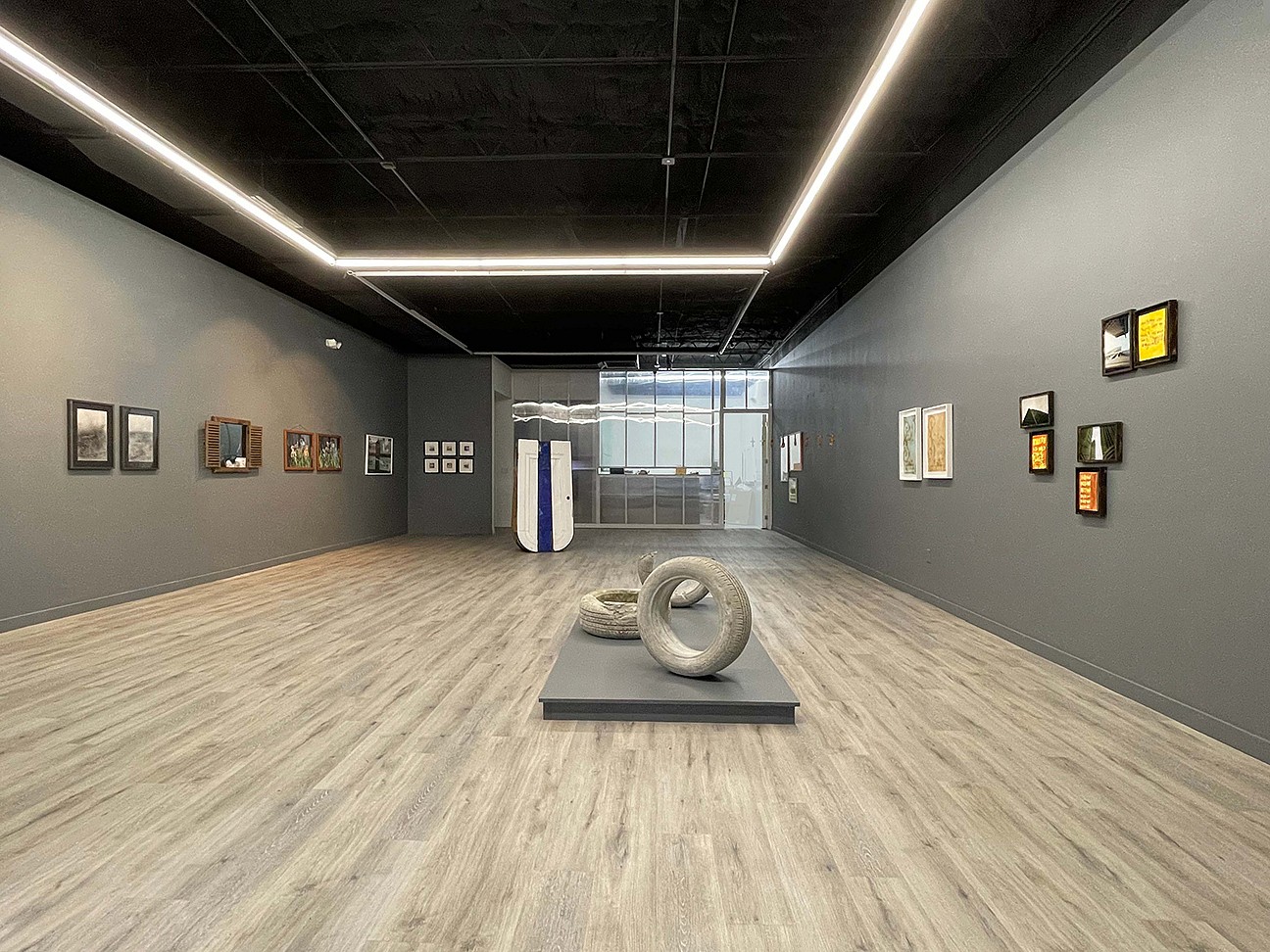PRESS RELEASE

Residential Properties 2.0
May 19 – Jul 22, 2023
Participating Artists at Exhibition:
A.S.T. (Alliance of the Southern Triangle)
Liene Bosquê
Amanda Bradley
Linda Chamorro
Yanira Collado
Kayla Delacerda
AdrienneRose Gionta
GeoVanna Gonzalez
William Lane
Johanne Rahaman
Roscoè B. Thické III
Odalis Valdivieso
Felice Grodin (Exhibition Curator)
1 :: breaking glass
[2015] We’ve all seen this. A group of neighborhood kids are playing ball in the street. Suddenly, the ball is overthrown, miss-hit or purposefully expelled through a window. The glass violently shatters, and the group disbands in all directions, avoiding the wrath of the homeowner. Like the force of a wrecking ball, the breaking of a window wreaks both sensory and territorial havoc.
[2023] There is no longer a child’s baseball that strikes the window with blunt force. One can apply abstractions – as we should. Now there is the slow, atomized spreading of cracks; old buildings, or even new, that give way to water, salt, and wind. Local and global weather intertwine and mix with old foundations and new drywall. Mold, mildew, and humidity physically mark the presence of a creeping climate – a manifestation of the virtual networks of planetary overreach.
2 :: swinging
[2015] If we take further and consider another example, the pendulum, a more dynamic series of reactions takes place. Swinging back and forth as well as in rotation, the amplitude and period of its swing are nonlinear, producing feedback (DeLanda, 2004). What if we were to trace this in the sand and extrude it as a workable material or membrane? What if, under certain pressures, this material was to not break, shatter or crumble, but have elastic properties – properties that might at critical points morphologically adapt?
[2023] Why has an architect never been assassinated? Because for the architect there is a necessity for alignment and complicity with the armatures of building. The “construction industry” requires architects for one thing – their signature and seal. Thus, where is the agency of architecture? Not in xeno-aesthetics or LEED certifications. It rests in the future of materialism itself. However, the substances where materials take shape are never delaminated from their social conditions – i.e., the rubber must always hit the road.
3 :: external pressures
[2015] As described by Moreno, G. & Oroza, E. (2012). there are pressures of economic precarity the home yields to as the “race against plywood sheets” fends off foreclosure. In turn, there may be extensions, or new economic limbs that spring to supplement cutbacks. Makeshift operations for home-based businesses create new patterns of assemblages that organically grow by necessity. In Miami there is the backdrop of an imported speculative condominium market causing further stratification of these zones (Gray, 2013).
[2023] Oh…those condos, a.k.a. 3D Assets. They are generic towers sandwiched between virtual investment flows and actual rising seas. As Diann Bauer points out:
“Climate change affects us all, though it does not affect us all equally. There is a predictable disconnect between those systemically responsible for climate change and those suffering its most dramatic consequences…In advance of a systemic breaking point, we still have the capacity to shift what cities are and how they function. We can see these transformations coming, and we can plan accordingly.”
We see it coming – in all its intensities: high winds and water, higher interest and insurance rates, inequity, displacement. But can we mitigate it through top-down strategies or bottom-up tactics?
4 :: internal pressures
[2015] On the flip side, technology has laced the traditional divisions of the house with both a publicness of the private (i.e., Facebook, Instagram) and the marketing of the domestic, i.e., Ebay, Etsy (Solis, 2012). If there is a digital entanglement of the private – how may it be materially and spatially manifested? How is the production and distribution of “products” in the home yielding conditions not only for material manufacture but immaterial labor?
[2023] “The hunch is that in the metaverse that is gradually taking shape, a real economy will be created, accompanied by new jobs. Among these, one of the most promising seems to be that of ‘metaverse architect’” (Signorelli, 2022). This recently has been coined as “architecting the metaverse.” However, reality-based technologies afford the capacity to import and export – to create inputs and outputs that may carry the same weights and biases as analog reality. This places reality-based technologies on the same plane as analog reality – they are parallel realities. Thus, it is a matter of metaversing the architect.
5 :: residential properties
[2015] The home has been a guiding typology for the principles of architecture and society. But in our case, as opposed to principles we will apply the notion of properties (European Graduate School Video Lectures, 2011). Extensive properties are measurable delineations of i.e., length, width, area, volume, and proportion. These are properties that traditionally have a fixed application to architecture. Intensive properties produce turbulence and ultimately a phase change i.e., speed, temperature, pressure, or density. They occur at critical thresholds where matter morphologically transforms, becoming heterogeneous. We are interested here in the synthesis of both, specifically addressed by contingencies outlined in 1-4 above.
[2023] This exhibition is a modest reboot of the original Residential Properties that took place at the Fountainhead Residency (Miami, FL) in 2015.
Download Press Release (PDF)